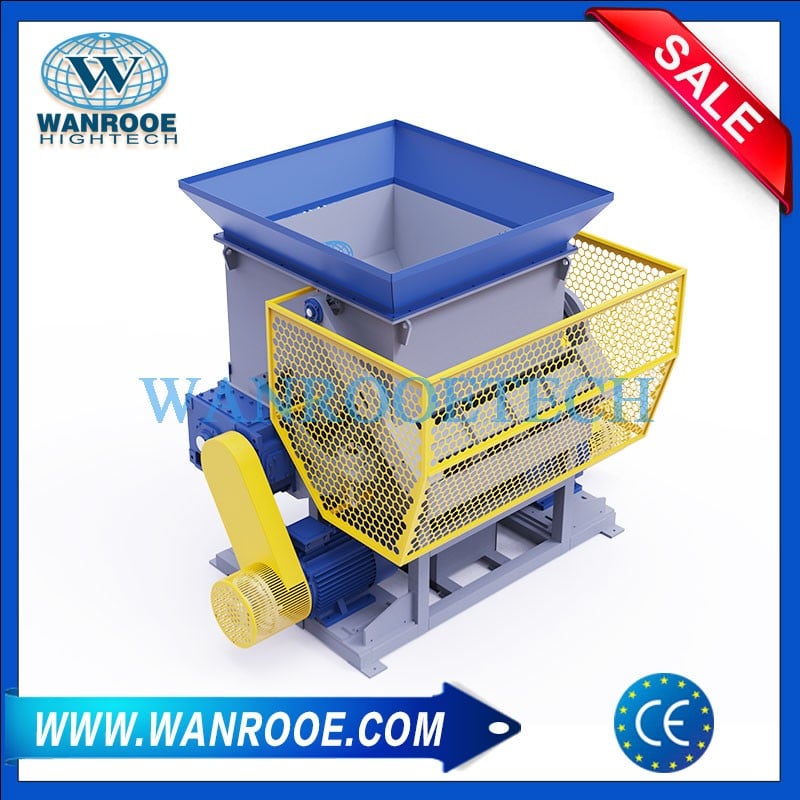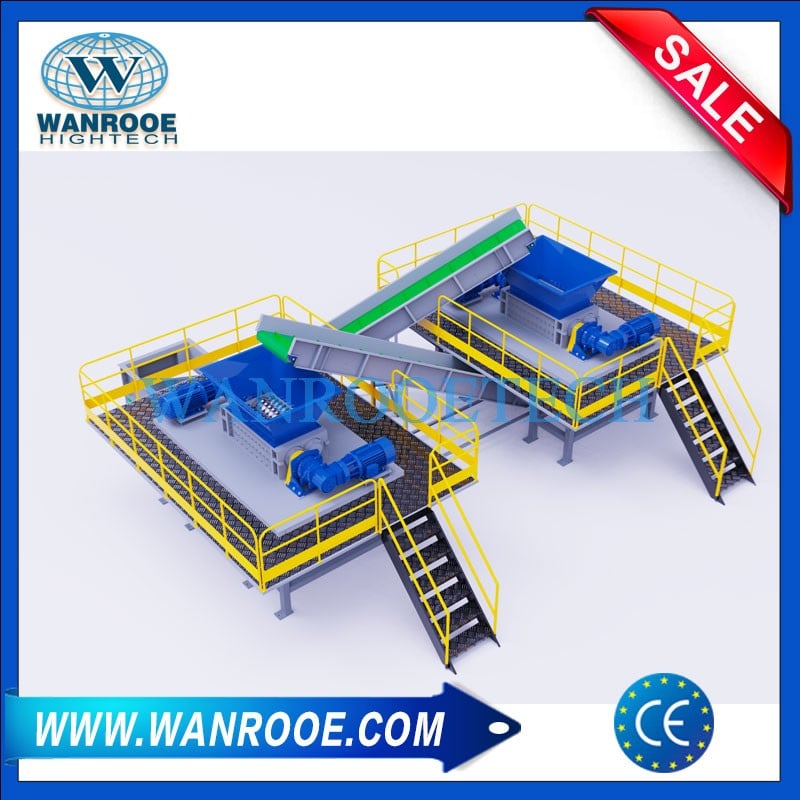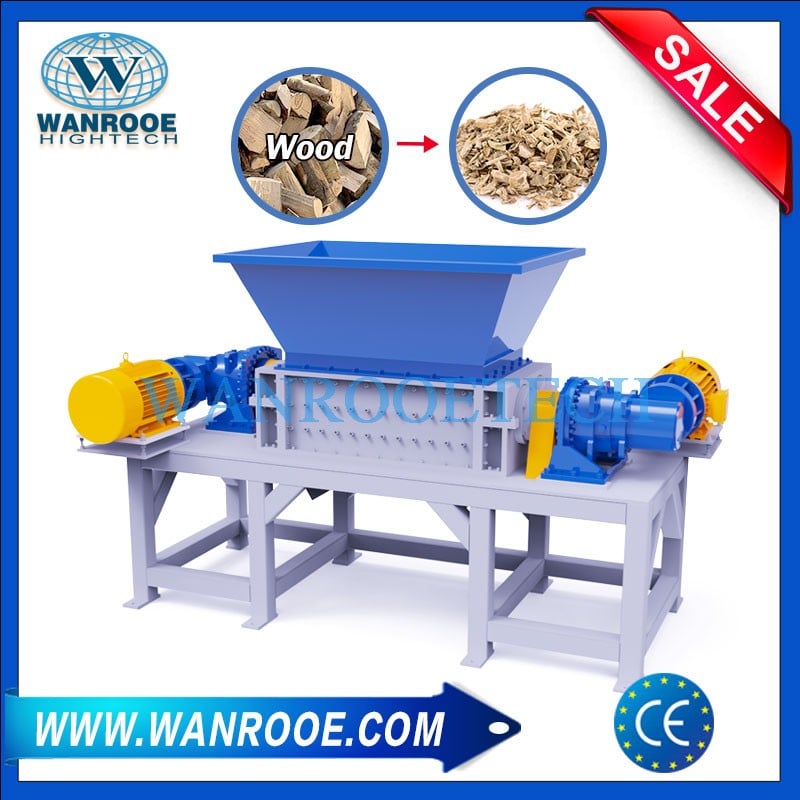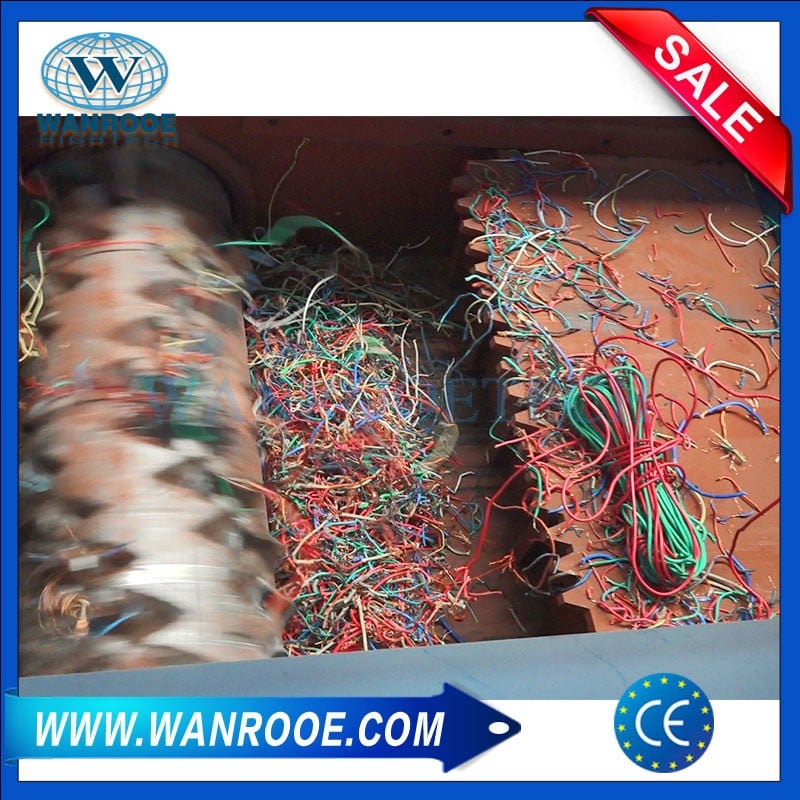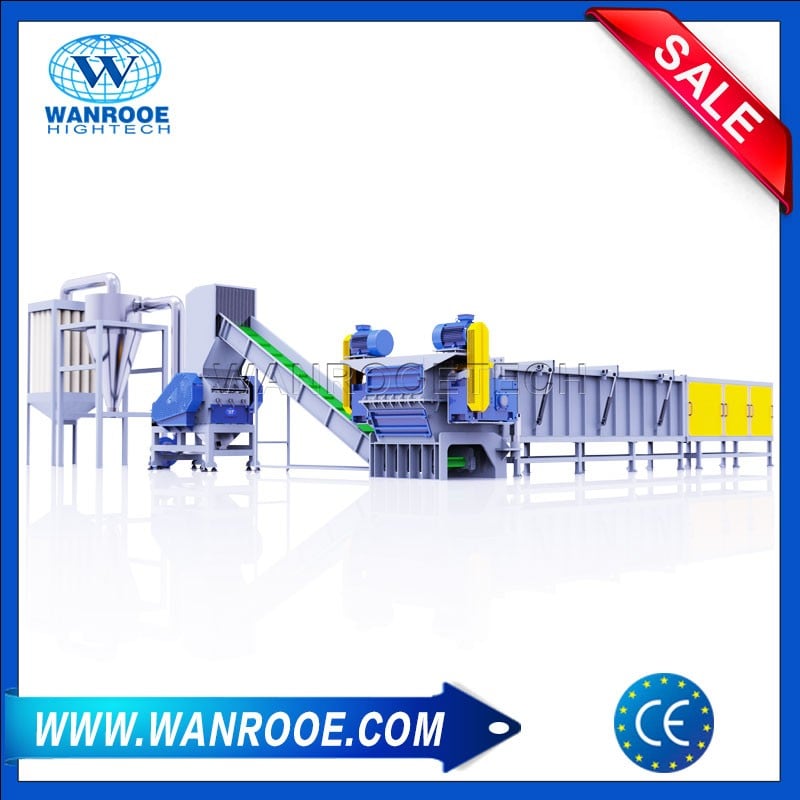Industrial Shredder For Recycling Waste
Views: 1039
Author: Site Editor
Publish Time: 2022-05-09
Origin: Site
An industrial shredder is an equipment for reduce the volume of materials and waste. The waste is usually oversize or compacted so that a crusher cannot process directly. Do not confuse industrial shredders with other recycling equipment, because shredders are used for primary grinding or disintergrating of waste up to a size of 40-150 mm.
In comparison with crushers, industrial shredders have the following advantages: they crush waste of any size; less wear of working knives, due to the low rotational speed of the rotor; low maintenance cost; low noise and vibration levels during operation.
The scope of use of shredders is wide, they are used for processing wood waste, decommissioned railway sleepers, large construction waste, car tires, old furniture, household electrical appliances, waste paper, glass production waste, plastics, films, and alternative energy production like RDF(refuse derived fuel) and SRF (solid recovered fuel).
Types of industrial shredders
By design, the catagory of industrial shredders includes single-shaft, two-shaft shredder and four-shaft shredder.
Single shaft shredders
The single-rotor or single-shaft shredder is a mechanism for shredding large, high-density waste, such as wood, wooden boxes and pallets, plastic products, large containers made of polymers, tires, etc. The main working unit of a single-rotor shredder is a hydraulic press plate.
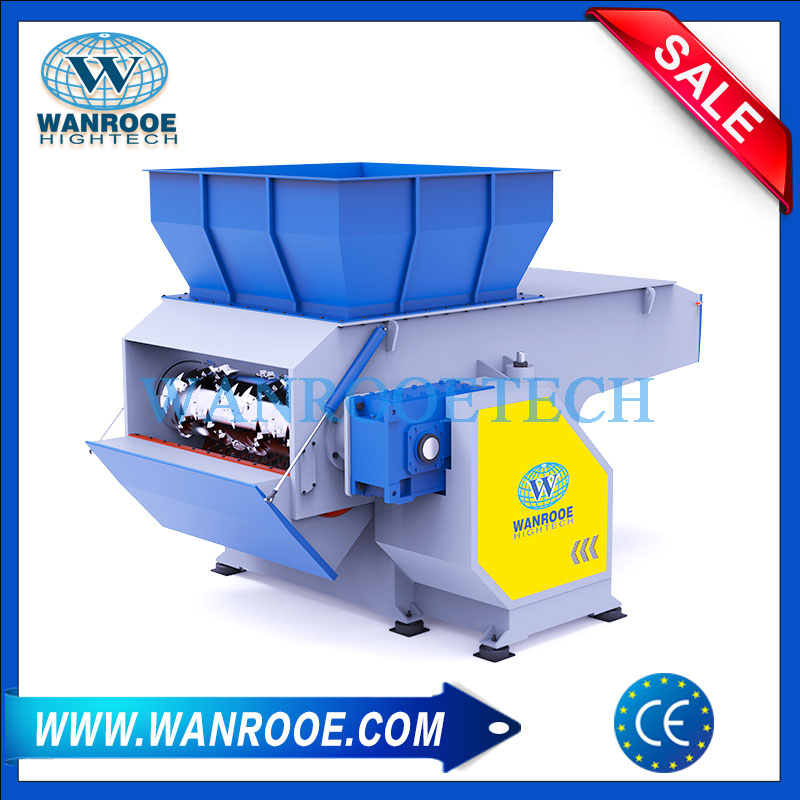
The principle of operation of the mechanism is as follows: waste is fed into the hopper manually or mechanically using a loader. The horizontal pusher, making reciprocating movements, brings the material to be processed to a rotating cutting rotor, on which knives are installed that carry out grinding. The rotor is a smooth or profiled element coated with a wear-resistant alloy. The cutting blades are connected to the rotor with reliable screw connections. The speed of movement of the press plate is regulated automatically, when the maximum pressure on the rotor is reached, the press plate stops the supply of processed raw materials until the pressure normalizes.
The grinding process lasts until the fractions of the crushed material pass through the screens, which is installed under the rotor. The diameter of the screen opening can vary from 20 to 80 mm.
Starting the equipment is carried out by pressing one button. A working single-rotor shredder does not require constant monitoring. The mechanism is easy to operate, does not require complex and expensive maintenance. Maintenance consists in periodically inspecting all parts of the mechanism and replacing the position of the knives when they become dull. Replacement is as follows: the knife is unscrewed, rotated 90 degrees, and then twisted and operated further. Please see video here.
Twin Shaft shredders
Double-shaft shredders are more productive and less constraint than single-shaft shredders due to their high torque and cross-cut design. The equipment is capable of downsizing any waste.
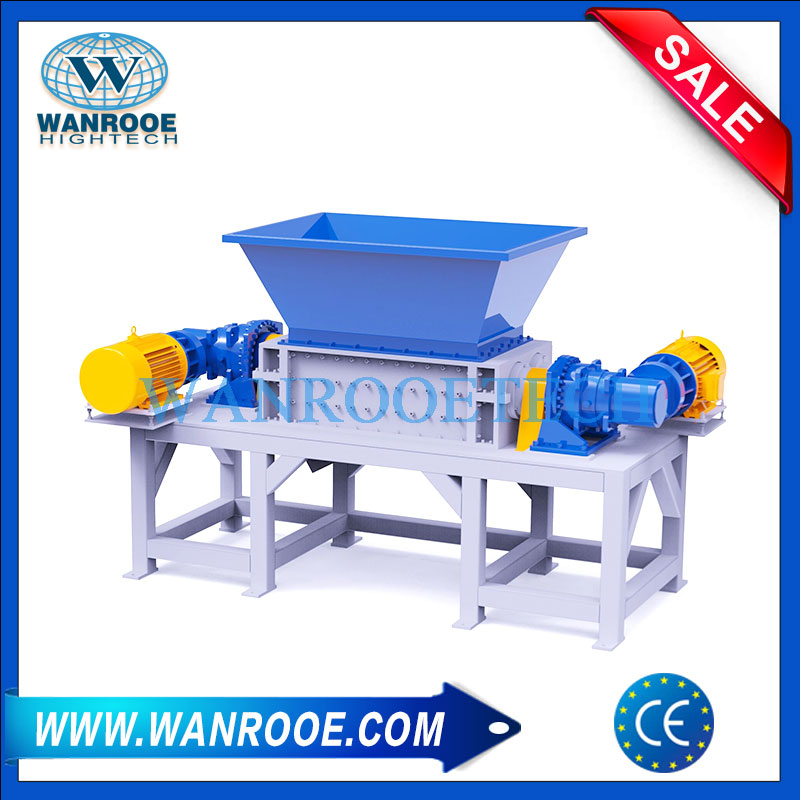
The principle of operation of a two-rotor shredder: the material is loaded into an infeed hopper, where it is captured by knives and cutting discs that are mounted on two shafts. Shafts in the process move towards each other and grind the raw material to the required size. Cleaning of cutting elements is carried out with the help of side plates.
Four Shaft Shredder
The shredder is the most powerful shredder in our catalogue. It is equipped with four rotating shafts that capture, pull and grind various types of waste.
Due to their high power and productivity, four-rotor shredders are suitable for the primary processing of bulky waste: car tires and bumpers, old furniture, plastic and metal barrels, pallets and other bulky and complex materials.
Despite its power, the shredder is simple and reliable in operation.
Industrial Shredder Application:
Industrial Shredders is an important component of solid waste recycling and managment. They can work with:
• Lines for the processing of household appliances, computers;
• Complexes for the processing of electronics;
• Pack breakers;
• Horizontal presses for cardboard, film, PET bottles;
• Packaging machines for solid waste;
• Drying machines for MSW;
• Tire recycling lines;
• Lines for cable processing;
• Metal processing lines and much more.
In order to better provide you with a professional answer, when sending an inquiry, please describe your parameters or technical requirements (such as processing materials, output size, capacity, etc.), we will reply to you as soon as possible!








